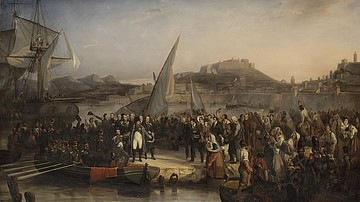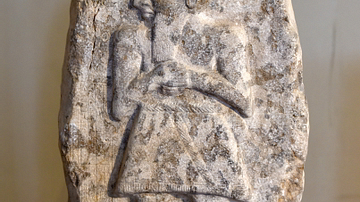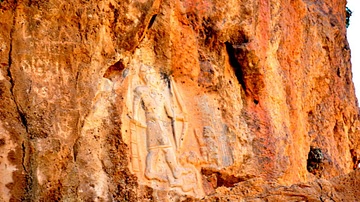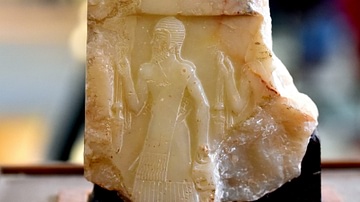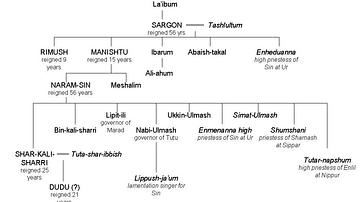Illustration
According to the inscription on the diorite piece of stele, it belongs to King Naram-Sin. It was found in Pir Hüseyin, a village near Diyarbakır. As it shows the borders of the Akkadian State in the era of Naram-Sin and reflects the artistic features of that era, it is one of the most important pieces of evidence concerning the Akkadian culture. King Naram-Sin, who ruled in the 3rd millennium BCE, entitled himself as the "King who brought peace to 4 regions". This title represents the 4 principal directions and symbolizes Naram-Sin's becoming the "King of Universe" after conquering the cities of Ebla and Elam, i.e. the west and the east. Diorite, found in Diyarbakir, Akkadian era, 2254-2215 BCE. (Istanbul Archeological Museum/Ancient Orient Museum)
About the Author
Cite This Work
APA Style
Amin, O. S. M. (2014, April 08). Stele of the Akkadian king Naram-Sin. World History Encyclopedia. Retrieved from https://www.worldhistory.org/image/2550/stele-of-the-akkadian-king-naram-sin/
Chicago Style
Amin, Osama Shukir Muhammed. "Stele of the Akkadian king Naram-Sin." World History Encyclopedia. Last modified April 08, 2014. https://www.worldhistory.org/image/2550/stele-of-the-akkadian-king-naram-sin/.
MLA Style
Amin, Osama Shukir Muhammed. "Stele of the Akkadian king Naram-Sin." World History Encyclopedia. World History Encyclopedia, 08 Apr 2014. Web. 10 Apr 2025.



